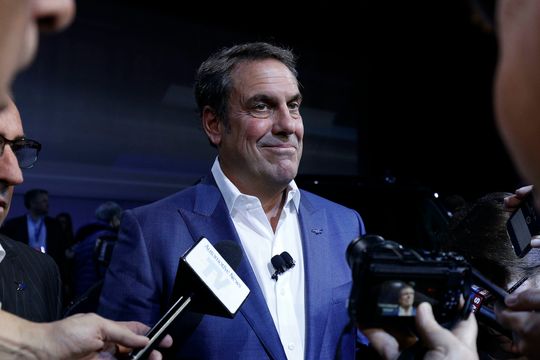For some Tesla owners, getting to a nearby Buick dealership is a lot easier than working through Tesla’s complex repair network.
General Motors dealerships have repaired more than 11,000 Teslas over the past year.
GM GM, -2.67% President Mark Reuss dropped that surprising news in a presentation to investors late last week. The service is “a growing business for us,” Reuss revealed. He offered no details on what services the dealerships have performed.
The idea points to a critical difference between Tesla TSLA, +0.03% and older automakers.
GM’s reach is everywhere. Tesla’s is limited.
Tesla doesn’t operate stores or service centers in every state.
The company has a fleet of mobile repair units that can perform many services in owners’ driveways. But, for more complicated repairs, owners must bring their cars (or have them towed) to service centers that can be hundreds of miles away.
Owners have complained that it’s hard to get an appointment at many, and repair prices can be high.
Tesla can’t solve that problem quickly. The company directly owns its own sales centers, which is forbidden by law in some states.
Traditional automakers work through networks of dealerships, which are business partners they don’t own. That leaves them splitting the profit from each sale with middlemen. But it means they can operate everywhere.
General Motors has a network of thousands of dealerships – so many that, the company estimates, 90% of Americans live within a 10-mile drive of one.
For some Tesla owners, getting to a nearby Buick, Cadillac, Chevrolet, or GMC dealership would be far simpler than working through Tesla’s complex repair network.
Automakers know their competitor’s products
Most GM dealerships now have service technicians certified to work on electric cars, with its own growing electric lineup to service.
And most automakers know their competitors’ products intimately. They buy competitors’ vehicles for benchmark testing and study.
There’s even an engineering company that buys most cars, dismantles them down to individual fasteners, and sells that information to the competition. Tesla knows exactly how Subaru FUJHY, -2.43% attaches carpet in a trunk. Subaru knows how Honda’s HMC, -0.90% rev-matching transmissions signal when to shift.
And, presumably, GM knows how Tesla arranges its battery cells for cooling and can reassemble them.
Also see: GM’s EV roadmap is ‘ambitious,’ but Wall Street doesn’t give it full credit just yet
Move puts Tesla in a tough spot
It’s less clear how GM’s dealer network is getting access to Tesla parts. That might be a valve Tesla could close.
But Reuss’s offhand announcement puts Tesla in a public relations bind. The company could tighten parts distribution to try to make it more difficult for GM, and other non-Tesla repair shops, to work on its cars.
But that risks the ire of owners who just found out they have closer service options than they knew.
So Tesla has a choice: let its owners walk around GM showrooms looking at new GM electric cars while GM fixes their broken Tesla, or choke off the parts supply and leave some owners resentful that they’re left towing their car to another state for repair.
“This is why Tesla is now investing millions to replicate the brick-and-mortar service centers we already have,” Reuss said.
Reporters at the investor event say Reuss chuckled softly as he made his offhand revelation.

